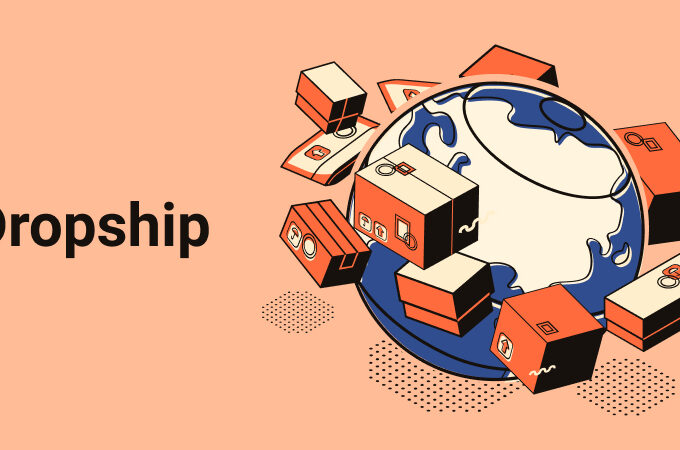
Are Smartphones Designed to Be Addictive?
Are smartphones designed to be addictive? Smartphones may have been designed to foster convenience rather than addiction. It’s, however, the applications we download on them that cause us to get addicted to our phone screens.
Does putting your smartphone down seem like such a difficult thing for you to do? Even when you finally put it down the notifications just keep queuing in. A text message from someone, a missed call from another, a pending email reply. It’s a never-ending vicious cycle.
Then the social media sites. They keep you glued on who posted what, who has just joined Facebook, and who is doing what. You’re inclined to check and see for yourself. With all this going on, it’s almost impossible to put your phone down.
It doesn’t look like such a bad thing anyway since you’re kept busy. However, the cause to worry comes in when phone-use interferes with important day to day activities. For example, are you pushing your tasks further back because you have wasted so much time scrolling through Twitter? You only realize when it’s already late in the night.
Tristan Harris, Google’s former design ethicist became popular for his open criticism on how such smartphones are designed to keep its users hooked to phone screens. According to him, a smartphone is merely just a slot machine. He goes ahead to blame the software and websites on our phones which enable us to scroll through as many times as possible.
The 32-year-old gentleman says humans have lost control of technology and allowed it to control them instead.
If you’re still wondering if you’re addicted to your smartphone, check out some of the shady ways popular apps/sites like Instagram, Facebook, Tinder, and Twitter, among others, get us caught in the addiction trap. These are the apps that have the most chances to make it to a phone addict’s device.

This site was designed to keep you engaged with the use of push notifications, feed, and Instagram stories. If you’re familiar with them then you can agree on the power they have to keep you coming back for more. Instagram stories are designed to attract your attention and keep you around. This social app tops the list of the most addictive applications on our smartphones for several reasons.
- It gets you into the habit of always taking pictures and recording videos. Thereafter prompting you to pass them through a series of filters to make them “Instagram worthy”. The reward for this process ranges from getting a million likes to accessing a larger following. This reward is what drives users to work even harder so that they can achieve more of it hence the growing addiction.
- Over the years, Instagram has invested a lot in keeping its users engaged with the use of push notifications. For example, you’ll receive notifications for someone you recently followed or a reminder to follow your Facebook friend, who recently joined the Instagram family. And yes, an argument could arise that there is an option to limit these notifications. However, it takes much more than just one tap to stop these notifications. It becomes even more difficult when you initially commanded in your device settings to keep updated about everything.
These push notifications however do such a great job. They are strategically sent during the week to keep you coming back for more.
Instagram stories were only introduced in August 2016 after being copied from their competitor app known as Snap chat.
They can be very beneficial to the person who is bored and is looking to waste time. They come in a variety of beautiful and hilarious face filters, animations, stickers that are customized according to your location. It’s a cool way to keep you glued to their site.
Watching Instagram stories in this kind of mode is what makes it addictive. When you visit Instagram, you’re welcomed by stories that are located at the top of the screen. They are also the first thing you’re most likely to click. This is where the never-ending story viewing begins. The story-threads are so long that people keep posting the whole day so you too may keep viewing the whole day.
The creators of this application mastered the art of using one psychological trick. It’s what has kept loyal users glued to their screens. Known as the variable ratio schedule, an active user gets rewarded for as many times as possible. It works similarly to the casinos. In this case, the person tweeting doesn’t have a single clue when they’ll get rewarded. All they know is at one time they will. Just like a lever machine, every time you play you win a certain amount, sometimes you will win lots of money and other times you don’t.
What most people don’t know is that these happenings are scheduled. A user will swipe downwards on their phone screen (similar to when you spin the wheel of fortune) so the app refreshes to bring you either new content or the previous content. In this case, you are already anxious to see some new and intriguing content. Sometimes you find it and sometimes you don’t. But because you so badly want to find what you’re looking for, you keep scrolling endlessly for as long as it takes.
Another Twitter technique can be seen every time you open this app. For a moment, there’s a blue screen which disappears after some time to reveal a white bird. Then you can finally view your feed. To the normal user, this entirely normal, probably just a slow internet connection. But this is not the case. Notice that it’s the same old routine every time you visit Twitter, no matter how fast the smartphone is.
Are you wondering how this app keeps you engaged? The feeling of being excited to see what pops up in your feed is so enticing that it keeps you on your toes. On some days you may see yesterday’s same feed or view new content. Instagram and Facebook have adopted this trick too. They use it to keep you staring at your phone screen 24/7 sometimes causing you to waste so much time. That’s how you get addicted.

Facebook is similar to Instagram in so many ways. It’s also the world’s most used app. Today it owns Instagram so we expect to see similar tactics on how both apps keep users engaged. This application also is best known for its assistance when it comes to logging into other applications. Even when you visit Google play store it appears among the top 5 free applications that are most downloaded. It comes in handy when you feel too lazy to create a new user account. With it you don’t have to go through the hurdles of password creation, you can simply opt to sign in using your Facebook account. This makes Facebook a more convenient way to log into other accounts.
It’s also a mini bank for memories. Everything is available from a user’s daily life, how old they are, job changes, new friends, birthdays and so much more. With this application, you don’t get to miss a thing. It notifies you on each and everything. You never miss out on an event because you’re constantly reminded.
The creators have gone as far as making custom videos for users. Who doesn’t want to login to their Facebook account and be welcomed by a birthday video with all their memories to wish them a happy birthday? It feels right to say Facebook is more than a social media site it’s a lifestyle.
Snap chat

Ask a Snap chat user about snap streaks and you will find out how they are very important to these users. A streak is a counter that keeps a record of how many days you and your Snap chat friend have sent each other a snap. If the day ends and you haven’t snapped your friend then the streak dies.
It’s not like the users get rewarded in any way. They only get the opportunity to brag about how they managed to maintain a streak for a long time, years even. So you have to work hard so that your streak doesn’t die. If it dies, you lose the chance to brag about how long you maintained it.
Snap chat also uses the Bitmoji app. This app gives users a sense of realness. It allows users to create an avatar that resembles them. The avatar expresses how one feels on a particular day in a fun way. A user may not be able to express themselves in the real world so they rely on using the avatar to communicate on social media. For some, it becomes an addiction.
Spotify
Spotify simply reorganizes the music you like in different unique ways.
This site works hard at encouraging users to keep coming back and spend more time on the app. They pay close attention to one’s kind of music, then repackage it in a new order. They don’t, stop there, the music comes repackaged with names like “Made for Liam.” A personal touch of a user’s name closes the deal. This strategy will keep any user coming back for more.
Tinder

Tinder is a dating app that helps join couples online and eventually they meet. Their strategy is for the user to swipe right if they like someone and swipe left if they don’t like them. Just like the casino technique, you swipe left and right with the hope of finally running into someone that’s the perfect match for you. It becomes addictive because you keep hoping to find your perfect match. Every day you log in and keep swiping.
Online Games

Online games are so fun to play these days. The creators have made the experience seem so real, ask any gamer out there. The techniques used in games are the main drivers for app addiction. They are the very reason as to why other apps use tricks. Examples of these games are World of Warcraft, Call of duty, and the very famous Candy crush saga. These games have players hooked to their phones day and night. In class, on the road, at home, at work everywhere. They play around with your brain by making you feel like you have to win and so you keep trying till you finish level one and get more excited for the next level. It’s very addicting.
Those are common applications that have been able to control phone owners. However, other things may contribute to phones being designed to be addictive.
The design of the phone.
Smartphone creators like Apple, Samsung, Techno, and others have done their level best to make them look as sleek as possible. They’re made easy to carry and come in several attractive colours. These features prompt users to want to carry their phones around everywhere they go. Just like we’ve been seeing, the reward of carrying around a flashy phone is the opportunity to brag around and attain admiration from others. What most people don’t know is that it becomes addictive. When you reach to extents where you carry your phone not because you have to use it but because you want to show off all the time will only grow stronger. This is especially if you’re achieving the target goal.
Parting shot
To conclude, yes smartphones may have been designed to be addictive. This all depends on how you use them and the kind of applications you install therein. The application creators have mastered various tricks and techniques to keep some phone owners glued to their screens day and night. For instance, all these actions that get rewarded for using these applications. However, the possible solution to this is practising to stay away from your phone and probably getting rid of certain apps that are needed in this day and era. The sacrifice may be worth it.




